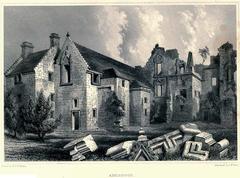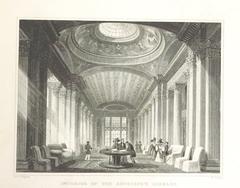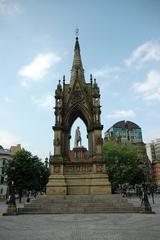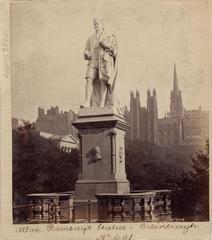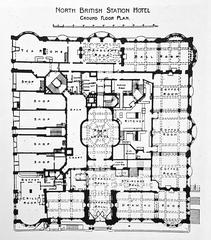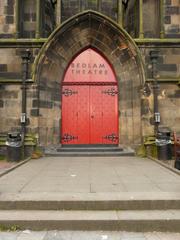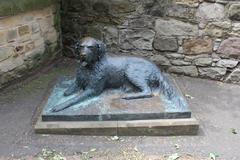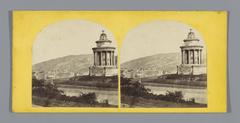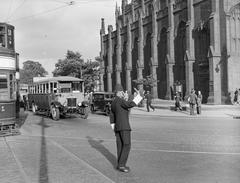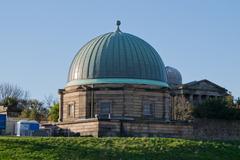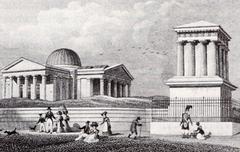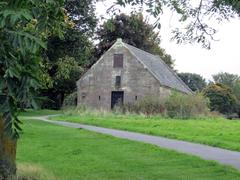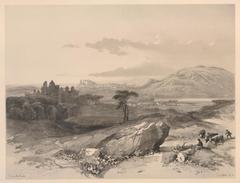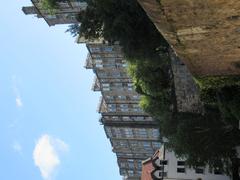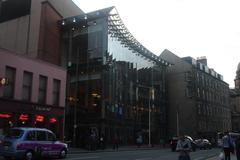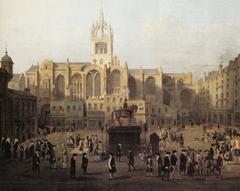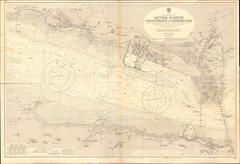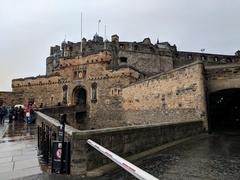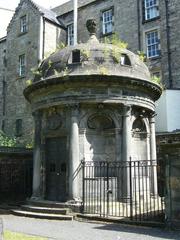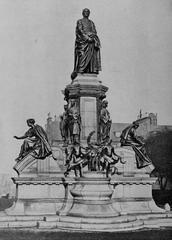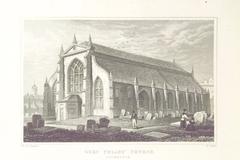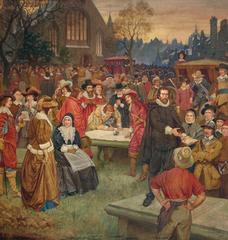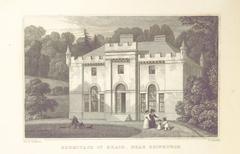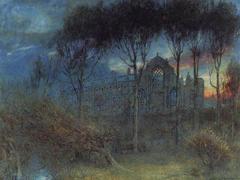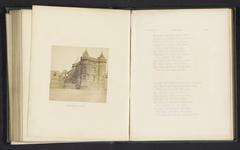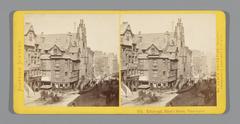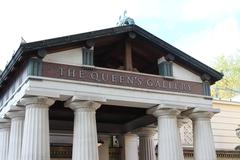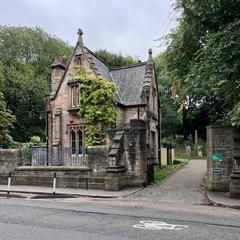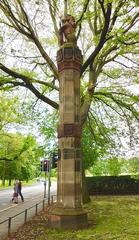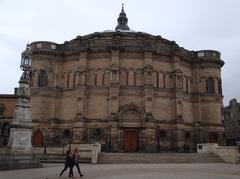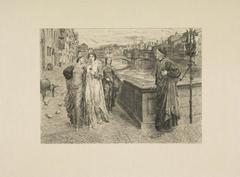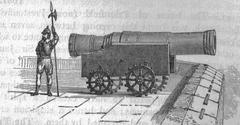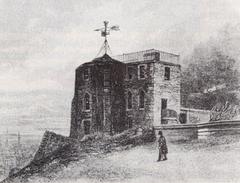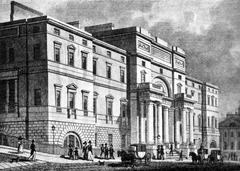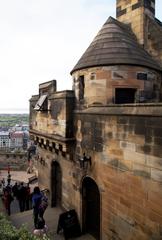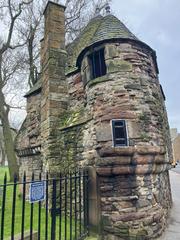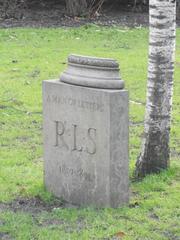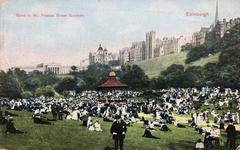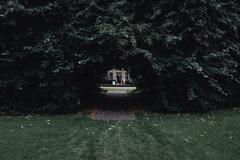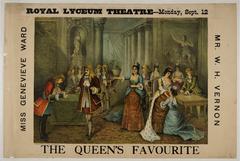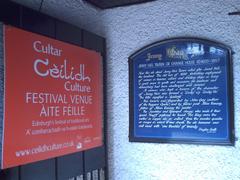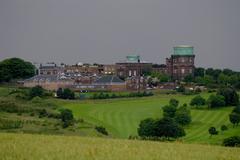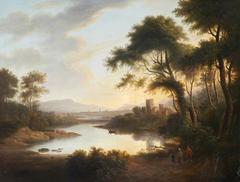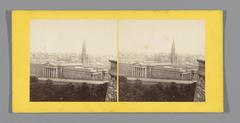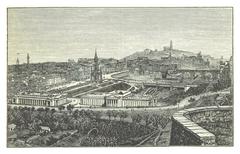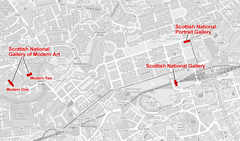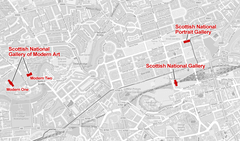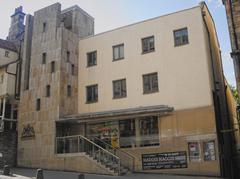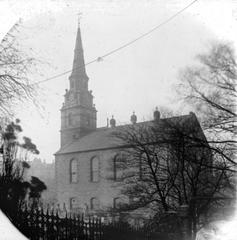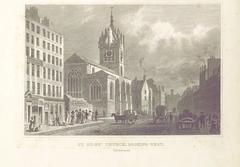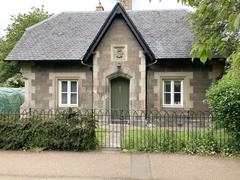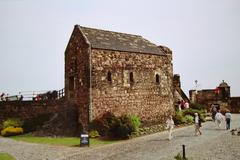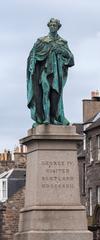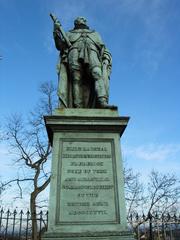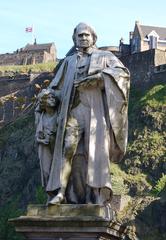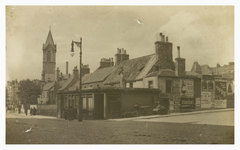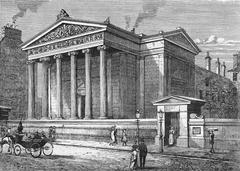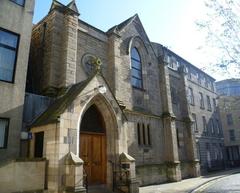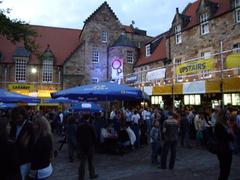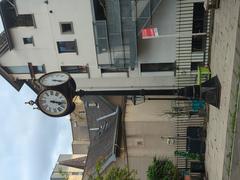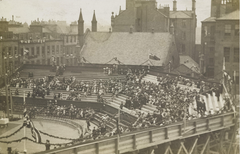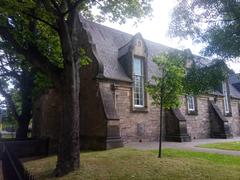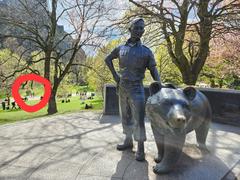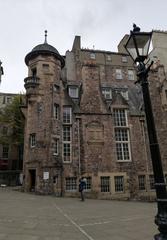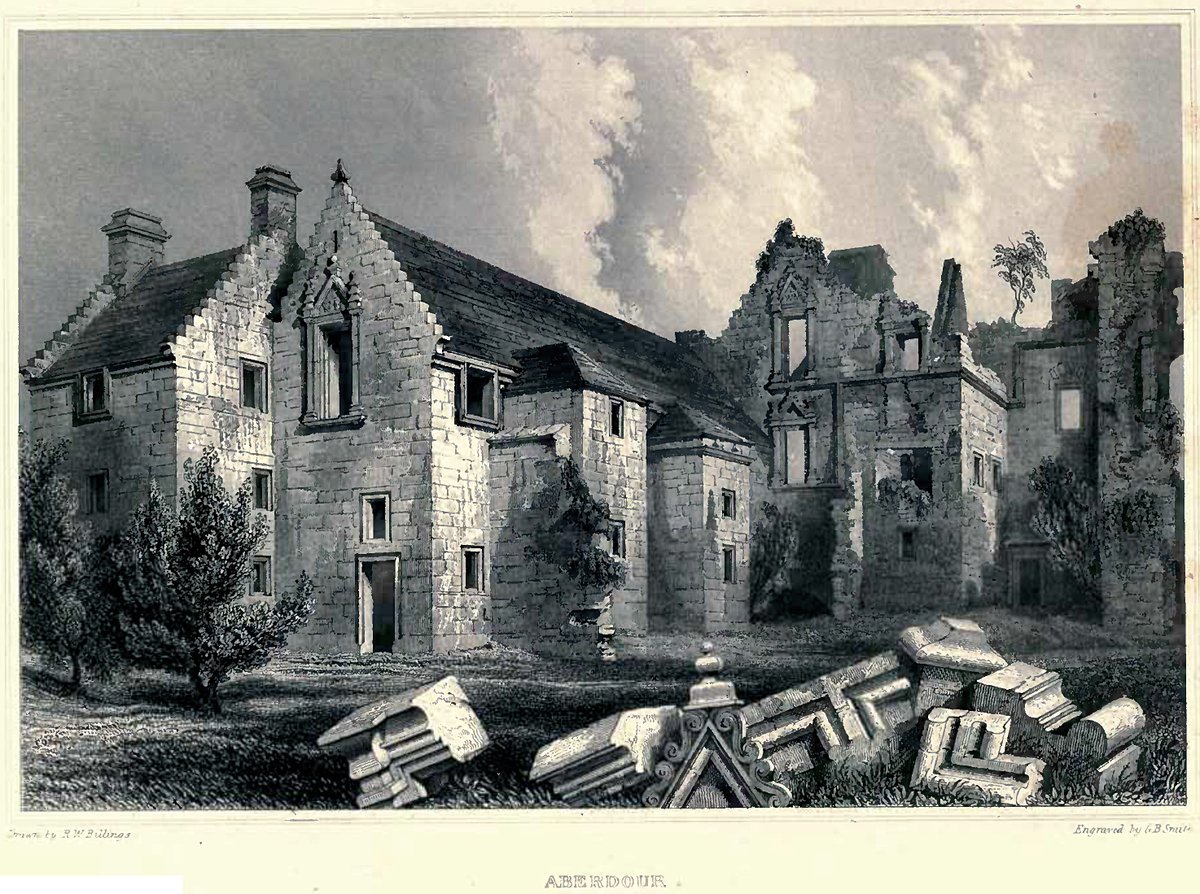
Visiting Aberdour Castle and Gardens: History, Tickets, and Tips
Date: 23/07/2024
Introduction
Aberdour Castle and Gardens, located in Fife, Scotland, is one of the oldest stone castles in the country, with origins dating back to the 12th century. This historic site offers a fascinating glimpse into Scotland’s feudal past and architectural evolution over several centuries. Initially constructed by Sir Alan de Mortimer, a Norman knight, around 1200, the castle began as a modest hall house. Over the centuries, it was significantly expanded and enhanced, particularly during the 14th century when it came into the possession of the influential Douglas family (Historic Environment Scotland).
Aberdour Castle’s architectural evolution is particularly noteworthy, reflecting various styles from medieval fortifications to Renaissance elegance. The castle’s 15th-century tower house and 16th-century gallery and large hall exemplify this transformation. The terraced gardens, one of the oldest surviving examples in Scotland, and a 17th-century dovecote further enhance the castle’s historical and cultural significance (Canmore).
Today, Aberdour Castle is managed by Historic Environment Scotland and is open to the public. Visitors can explore its well-preserved ruins, beautifully maintained gardens, and engage in various special events and activities hosted throughout the year. The castle’s proximity to other attractions like Aberdour Silver Sands Beach and the Fife Coastal Path makes it an ideal destination for history enthusiasts and casual visitors alike (Visit Scotland).
Table of Contents
- Introduction
- Early Beginnings and Construction
- The Douglas Family Era
- Architectural Evolution
- The 17th Century and Beyond
- Decline and Preservation
- Visitor Information
- Nearby Attractions and Special Events
- Photographic Spots
- Historical Significance
- Visitor Experience
- FAQ
- Conclusion
Early Beginnings and Construction
Aberdour Castle was initially constructed by Sir Alan de Mortimer, a Norman knight, around 1200. The original structure was a modest hall house, a common type of medieval residence, built primarily for defense and residence (Historic Environment Scotland).
The Douglas Family Era
In the 14th century, the castle came into the possession of the Douglas family, one of the most powerful and influential families in Scotland. The Douglases expanded and enhanced the castle significantly over the centuries. James Douglas, the 7th Earl of Douglas, acquired the castle through marriage to the Mortimer heiress in 1342. This acquisition marked the beginning of a long association between the castle and the Douglas family (Undiscovered Scotland).
Architectural Evolution
15th Century Additions
In the 15th century, the Douglases added a substantial tower house to the original hall house, which provided additional living space and improved defensive capabilities. This tower house is one of the oldest parts of the castle still standing today.
16th Century Enhancements
The castle was further expanded in the 16th century with the addition of a new range of buildings, including a gallery and a large hall. These additions were designed to enhance the comfort and status of the castle, reflecting the increasing wealth and influence of the Douglas family. The gallery, in particular, is notable for its fine Renaissance detailing and is one of the earliest examples of this architectural style in Scotland (Canmore).
The 17th Century and Beyond
Terraced Garden
The 17th century saw further modifications to Aberdour Castle, including the addition of a terraced garden. This garden is one of the oldest surviving examples in Scotland and provides a fascinating insight into the gardening practices of the period (National Trust for Scotland).
Dovecote
In addition to the garden, a dovecote was also added in the 17th century, reflecting the influence of Renaissance and Baroque styles.
Decline and Preservation
By the late 17th century, the Douglas family had shifted their primary residence to the more modern and comfortable Aberdour House, located nearby. As a result, Aberdour Castle gradually fell into disrepair. However, the castle remained an important historical site, and efforts were made to preserve its ruins.
In the 20th century, Aberdour Castle was taken into state care, and significant restoration work was undertaken to stabilize and preserve the remaining structures. Today, the castle is managed by Historic Environment Scotland and is open to the public, offering visitors a chance to explore its rich history and architectural heritage (Historic Environment Scotland).
Visitor Information
Visiting Hours
The castle is open to visitors year-round, with varying hours depending on the season. It is always best to check the latest visiting hours on the Historic Environment Scotland website before planning your visit.
Tickets
Tickets can be purchased online or at the entrance. Discounts are available for children, seniors, and groups. Members of Historic Environment Scotland enjoy free entry.
Travel Tips
Aberdour Castle is located in the picturesque village of Aberdour, easily accessible by car or train from Edinburgh and other major cities. Parking is available on-site.
Accessibility
The castle grounds and certain areas of the castle are accessible to visitors with mobility issues, but some parts may be challenging due to the historic nature of the site. It is advisable to contact the castle in advance for detailed accessibility information.
Nearby Attractions and Special Events
Aberdour Castle is located near several other fascinating historical sites and attractions. Visitors can explore the nearby Aberdour House, the Aberdour Silver Sands Beach, and the scenic Fife Coastal Path. The castle also hosts special events throughout the year, including historical reenactments, guided tours, and seasonal festivals.
Photographic Spots
The castle and its grounds offer numerous picturesque spots for photography. The terraced garden, with its stunning views over the Firth of Forth, is particularly popular among photographers. The dovecote and the Renaissance gallery also provide excellent backdrops for capturing the castle’s historical charm.
Historical Significance
Aberdour Castle holds a significant place in Scottish history, not only for its architectural features but also for its association with the powerful Douglas family. The castle’s long history reflects the broader social and political changes in Scotland over the centuries, from the medieval period through the Renaissance and into the modern era.
The castle’s architectural evolution, from a simple hall house to a grand Renaissance residence, provides valuable insights into the changing tastes and lifestyles of the Scottish nobility. The terraced garden and dovecote are particularly important as they represent some of the earliest examples of these features in Scotland.
Visitor Experience
Today, visitors to Aberdour Castle can explore its well-preserved ruins and beautifully maintained gardens. The castle offers a unique glimpse into Scotland’s medieval and Renaissance past, with informative displays and guided tours available to enhance the visitor experience. The terraced garden, with its stunning views over the Firth of Forth, is a highlight of any visit, providing a tranquil and picturesque setting for exploring the castle’s history (Visit Scotland).
FAQ
Q: What are the visiting hours for Aberdour Castle? A: Visiting hours vary by season, so it’s best to check the Historic Environment Scotland website for the most up-to-date information.
Q: How much do tickets cost? A: Ticket prices vary, with discounts available for children, seniors, and groups. Members of Historic Environment Scotland enjoy free entry.
Q: Is the castle accessible for visitors with mobility issues? A: Some areas of the castle are accessible, but due to its historic nature, certain parts may be challenging. Contact the castle in advance for detailed accessibility information.
Q: Are there any special events at the castle? A: Yes, Aberdour Castle hosts various special events throughout the year, including historical reenactments and guided tours. Check the castle’s event calendar for more details.
Q: Can I take photographs at Aberdour Castle? A: Yes, photography is allowed, and there are many picturesque spots within the castle and its grounds.
Conclusion
Aberdour Castle and Gardens offer a rich historical experience, showcasing the architectural and cultural evolution of Scotland over several centuries. From its origins as a 12th-century hall house to its Renaissance enhancements, the castle’s transformation reflects the changing tastes and lifestyles of its noble inhabitants. The terraced gardens and dovecote add to the site’s charm, providing a picturesque setting that appeals to both history buffs and casual visitors.
Managed by Historic Environment Scotland, Aberdour Castle is not only a well-preserved historical site but also an educational resource. The castle hosts various events throughout the year, making it a vibrant cultural hub. Its accessibility and proximity to other attractions like Aberdour Silver Sands Beach and the Fife Coastal Path make it an excellent day-trip destination from Edinburgh (Historic Environment Scotland).
Visitors are encouraged to explore the castle’s rich history through guided tours, informative displays, and the Historic Environment Scotland mobile app. Whether you’re interested in medieval architecture, Renaissance gardens, or simply a scenic outing, Aberdour Castle offers something for everyone. For the latest updates and event information, be sure to check the official website and follow on social media (Visit Scotland).
